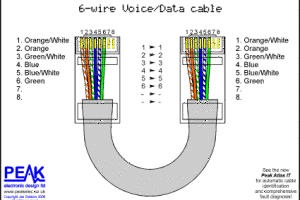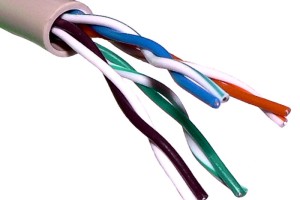Avoid Network Cabling Complications
Regardless of the sort of business you do, you are most likely heavily dependent on your Local Area Network to get your job done. When your network has issues or complications, it can put quite the wrench in your operations. Here are four practical ways to ensure that your network and it’s future are sound.
1. Plan Ahead
No matter what sort of technology your office is equipt with currently, it is important to stay up to date and informed about emerging technologies and how they might serve you. As your old systems need replacement it will serve you to choose the most recent equipment. Labor should be the costliest part of your network installation and while cheaper cables may seem like a good way to cut costs, they tend to wear out faster and require more expensive manpower to fix. Cable that is top-of-the-line is pricier, but will cause you fewer headaches. Using the right cable for the right purpose is also important. Twisted pair cabling can be more expensive than single cabling, and was once unnecessary for voice connections. Companies are often tempted to use two different cables, one for data and one for voice. However, as voice technologies advance, they are run more effectively on the same cable as data, and will be easier to organize and maintain if do so, and use Ethernet switch when needed.
2. Mind Where you Run Your Cables
Be sure you network cables are not run along the same route as your electrics. The magnetization of electrical wires can degrade the integrity of your data stream, and physical cables. This can disrupt or slow the transmission of information. If your cables must be near electric lines, make sure they are perpendicularly crossed instead. Also, be sure that there are no fixtures or devices near you network cabling that could introduce ‘noise’ into the data stream. This includes motors, fluorescent lighting, and anything that gives off a magnetic field. Remember as well that many cables have limitations on distance functionality. While you may be able to push at these limits a bit, it is important not to overdo it. Make sure you have the proper cable to run data the distance you need.
3. Follow Laws and Standards.
It will be beneficial to follow laws and standards. Those standards have been put in place for good reason and when you break them you risk not only inefficiency in your network, but danger to your information and staff. The structured EAI/TIA-568 standards are applied to optimize the performance of your network and to make it easy to maintain. Many areas also have codes to ensure the safety of installers and personnel and should not be ignored. They are particularly important in the case of emergencies for the work of first responders. You also risk fines and expenses upon inspection if you have not properly followed local legislation in these cases.
4. Hire the appropriate Labor.
Most network complications come from hiring the wrong person for the job. While in the past there were not as many data cabling specialists available and companies might turn to phone cabling workers or IT staff to solve network issues, that is no longer the case. To learn more about what makes a qualified structured cabling tech, seek out structured cabling staffing agencies who require a pedigree and guarantee the work of their staff. Once you have found a professional you can trust, take their advice. They, after all will be the ones maintaining you system.




